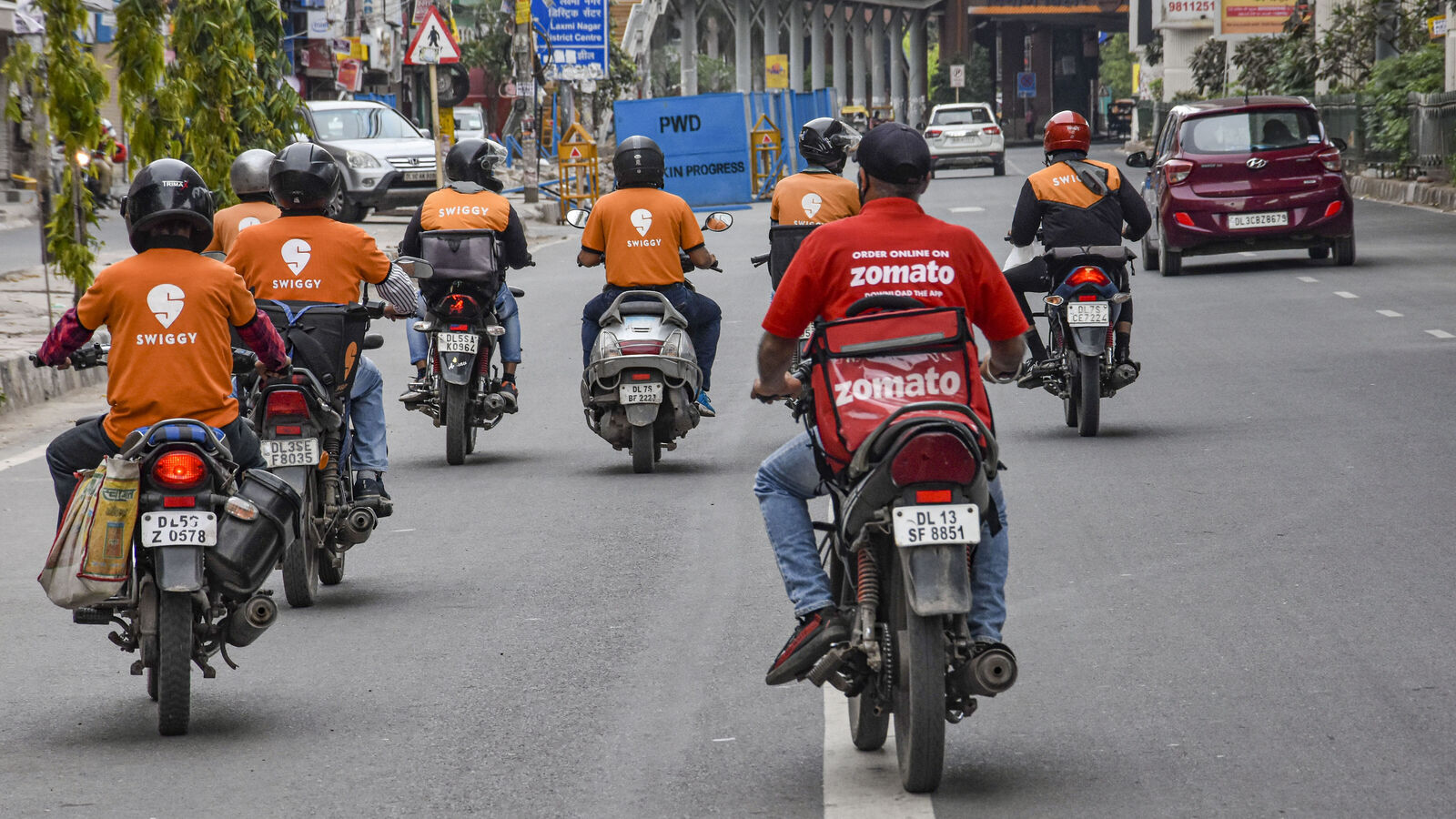The ongoing competition between food delivery giants Swiggy and Zomato is intensifying, especially with Swiggy’s recent Draft Red Herring Prospectus (DRHP) filing. The insights provided by Motilal Oswal Financial Services (MOSL) highlight the key aspects of this rivalry, focusing on their current market standings, operational strategies, and future potential.
According to MOSL, Zomato currently leads the market in both food delivery and quick commerce, establishing a solid foothold with a growing customer base. However, the competition for consumer spending in urban areas is still very dynamic. Notably, Swiggy’s innovation strategy and its robust customer retention capabilities suggest that the competitive landscape could shift, making this battle far from one-sided.
Zomato’s Strengths: Stability and Growth
One of Zomato’s impressive achievements is the stability and profitability of its food delivery sector. Recent data reveals a steady increase in Gross Order Value (GOV) alongside EBITDA margins of 3.4%. In contrast, Swiggy’s food delivery unit has just managed to break even, with a slim EBITDA margin of 0.8%. This financial disparity underscores Zomato’s well-executed strategies and operational efficiency.
Furthermore, MOSL forecasts a remarkable compound annual growth rate (CAGR) of 55% in revenue for Zomato from FY24 to FY27. Expectations point to improvements in profit after tax (PAT) margins, which are projected to rise to 4.3% in FY25, 8.7% in FY26, and a striking 13.2% by FY27, illustrating Zomato’s robust growth trajectory.
With a target valuation set at ₹320 per share, MOSL reinforces a “BUY” rating on Zomato, indicating a potential 15% upside from its current market position.
An Insight into Market Share: Zomato vs. Swiggy
Recent analysis by MOSL emphasizes Zomato’s impressive growth, marking an increase in its market share from 54% in FY22 to 58% by the first quarter of FY25. This growth is attributed to Zomato’s strategic execution, which has outperformed Swiggy, leading to higher monthly transacting users (MTUs), with Zomato reaching 20 million compared to 14 million for Swiggy.
However, despite having fewer MTUs, Swiggy reported a 6% higher Gross Order Value (GOV) per user, indicating a more engaged and mature customer base. Moreover, Swiggy’s superior monetization strategy showcases a promising revenue generation potential. MOSL predicts that the gap in engagement levels between the two companies may narrow as Zomato continues its market dominance.
The Quick Commerce Competition: Blinkit vs. Instamart
In the burgeoning quick commerce industry, Zomato’s Blinkit is gaining a competitive advantage over Swiggy’s Instamart. Although Instamart was a pioneer in this sector, Blinkit has quickly gained traction.
Currently, Blinkit operates 639 active dark stores across 44 cities, exceeding Instamart’s 557 stores in 32 cities. In the first quarter of FY25, Blinkit’s GOV surpassed Instamart’s by 81%, demonstrating greater efficiency in take rates and profitability. Remarkably, Blinkit reported an EBITDA margin of -0.1%, a significant improvement compared to Instamart’s -11.7%. Despite Blinkit’s current lead, MOSL cautions that the quick commerce sector is still evolving, and the ultimate winners are yet to be determined.
Swiggy’s Innovative Edge
Swiggy’s integrated app model positions it as a leader in innovation. The development of Instamart is a prime example of how Swiggy harnesses synergies within its platform. Furthermore, the launch of Bolt, a 10-minute food delivery service, illustrates Swiggy’s commitment to pushing boundaries. Although Zomato has attempted similar initiatives, it struggled to achieve the same scale.
MOSL posits that Swiggy’s dedication to innovation and growth will keep it competitive in both food delivery and quick commerce. With ongoing developments in quick commerce and collaborations with significant brands, Swiggy is strategically positioned to be a frontrunner in future innovations.
In conclusion, MOSL’s analysis underscores that while Zomato currently holds the lead in market presence and profitability in the food delivery and quick commerce sectors, Swiggy’s innovative mindset and strong user engagement will ensure it remains a formidable player in the arena. Both companies are poised to influence the future of these sectors, and the dynamics of their competition will continue to evolve.
MOSL continues to maintain an optimistic outlook on Zomato’s long-term prospects while acknowledging Swiggy’s capability for innovation and market disruption. As the quick commerce landscape is still in its infancy, the race for market supremacy remains wide open.
Disclaimer: The views and recommendations expressed in this analysis are those of individual financial analysts or broking firms, and not of any corporate entity. Investors are encouraged to seek advice from certified financial professionals before making any investment decisions.












